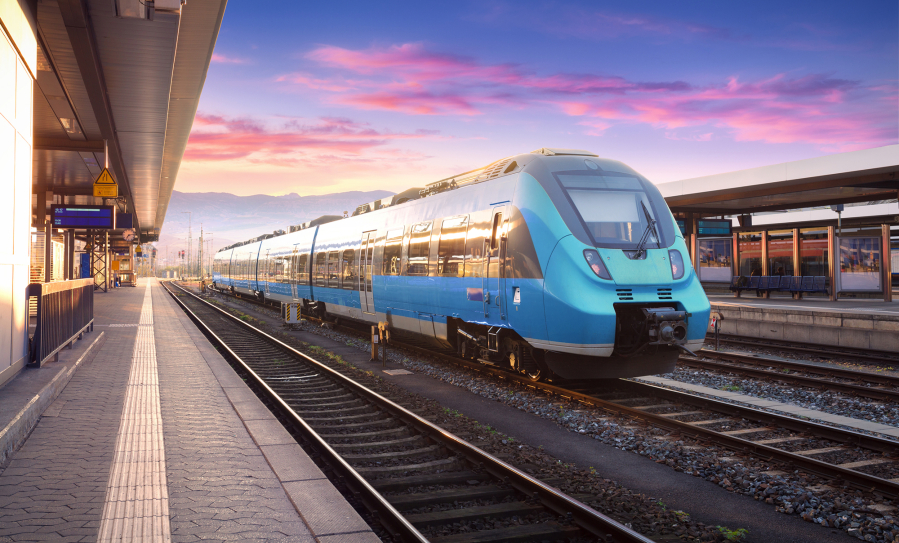The pandemic is over, beaches beckon and airline bookings are brimming with leisure travelers powering the industry’s rebound from the COVID-19 abyss.
But with the return to flying comes a reminder of its considerable contribution to global warming. Aviation accounts for some 2.1 percent of CO2 emissions, a share that is set to rise as other industries decarbonize more quickly. Global jet-fuel demand is projected to pass 2019 levels next year, according to BloombergNEF.
For now, there’s no real way to get around the environmental impact. In an ideal world, commercial aircraft would be powered by fossil-free alternatives to the kerosene used in today’s jet engines — but battery power, e-fuels and hydrogen propulsion will take decades, if ever, to reach scale.
Carbon offsets, promoted by airlines as a way for travelers to cleanse climate guilt, have been shown to be largely ineffective. So-called sustainable aviation fuels, touted as a first step to clean up the industry, are expensive and in minimal supply. Their effectiveness varies with choice of feedstock and other factors.
Which is why climate-change campaigners have a more straightforward approach: people just need to fly less.
“The best option would be not to travel at all,” said Matteo Mirolo, aviation manager at Brussels-based sustainability advocacy group Transport & Environment. “Second best is, of course, take another mode of transportation, which enables you to travel with a much more limited climate impact.”
Mirolo’s group lobbies for government policies that will make less-polluting transport options more competitive. Europe is ahead of other regions in some ways — it is expanding rail networks, and big businesses have largely kept to pledges to fly less.
Governments have taken limited steps — France has banned a handful of domestic flights to promote trains, and the Dutch state wants to limit flights from its Amsterdam hub. But for now, it’s up to leisure travelers to find alternatives.
Beyond cycling, hiking and other sweat-inducing activities, here are some ideas for travelers to lower their carbon footprint this summer.
In Europe, a growing high-speed rail network presents a real alternative to flying between many major cities, offering competitive travel times with much lower carbon-emissions impact. Spain, France, Germany and Austria are among the countries investing to expand services. Links across borders are still a snag, as government-owned systems are optimized for domestic travel.
Resourceful travelers can tap their inner Marco Polo to find a host of multi-country options. For a simple plan, there’s the pioneer of international high-speed rail, Eurostar, which connected London with Paris, Brussels and Lille in 1994, adding Amsterdam in 2020.
Paris makes a good starting point for a longer trip as well. There’s an extensive high-speed French network, with trains to Bordeaux, Marseille and Strasbourg, and access to Zurich, Milan, Barcelona, and Frankfurt. A fast link with Berlin is in the works.
The potential for rail travel is limited by the networks themselves — another reason planes and cars won’t be replaced soon. Train travel is more complicated, requiring flexibility and some creativity in vacation planning.
The hassles tend to multiply over longer distances and across borders. One approach is to combine faster trains with more-scenic routes. A one-week itinerary could take in France, Switzerland and Italy, for example, or traverse Hungary, Slovakia, Vienna and Lake Bled in Slovenia.
Rail operators have also added a slew of overnight trains, which can save on hotels and minimize the inconvenience of longer-distance journeys. Austria’s Nightjet has recently overhauled rolling stock that includes sleeper cabins with showers.
For one example, a night train departing Munich at 8:09 p.m. arrives in La Spezia, gateway to Italy’s Cinque Terre, at 11:10 a.m. the following day. The trip’s carbon impact is about one-fourth of the more typical approach: flying to Genoa, then renting a car, according to calculations from the Ecopassenger.org website.
There are luxurious options like the Venice-Simplon Orient Express, with destinations as far as Prague, Budapest and Istanbul, or the Golden Eagle Danube Express, a hotel train whose itineraries range from the castles of Transylvania to Budapest.



